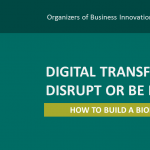All business models are not alike. Unfortunately, many executives look at their own firm’s business model as a given—as the natural, the best, or perhaps even only way to make money in a given industry. But, in reality, there are many, many business models that executives have to choose from. Understanding that there are many instead of one or two models can bring people to a new view of how they do business: that firms can be very creative in the way the can configure their entire business. So, in addition to innovation in products, services and processes, companies need to explore business model innovation — an often untapped resource for creating real value.
What is Business Model Innovation?
Business model innovation is a combination of changes that a company makes around the industry, enterprise, and revenue model. While these three components of the business model are discrete and unique, they may be interrelated.
1. The Industry Model — Change the Industry
Industry model innovation is defined as moving into new white space, new gray space, or moving to redefine the industry value chain. Examples of these include:
- White Space: Google creating a totally new industry
- Horizontal: Virgin moving from airlines to music to cell phones to space travel
- Redefine Value Chain: Dell turning computer manufacturing from offering a few mass‐produced models to a wide range of customizable units
2. The Enterprise Model — Change the Value Chain
Enterprise model innovation focuses on redefining the internal and external boundaries of your organization to create a new business model. This includes moving up or down the value chain, leveraging a network of partners or outsourcing non‐ core activities.
In some cases, this requires migrating up the value chain like Samsung with chips for cell phones or moving down the value chain like Apple with virtual (iTunes) and physical storefronts.
Another option is for companies to find ways to leverage a network of partners that increases the effectiveness and efficiency of production, offering, distribution and sales. illy has created a network of partners who help with coffee selection and collection while Enterprise has a network of insurance companies and car dealerships who help with sales and referrals.
Finally, some companies have Enterprise value chain focusing on their core competency and outsourcing non key activities and assets. This is a move to focus on your core competency. A123 in the US, a recently IPOed battery company has decided to focus on the materials for making batteries while developing downstream partnerships for manufacturing with Chinese companies, and select partnerships with Motorola for cell phones, Black & Decker for power tools and GM for cars.
So, businesses have to look all along their value chain and ask themselves: Should I make this, collaborate with another company, or outsource it? Do these choices change the game and create sustained value for us.
3. The Financial Model
Business model innovation around the financial model is making investments in new ways and using different pricing models. There are many pricing models to consider, in fact there are over 22 pricing models which can be bucketed into five categories. These pricing categories include strategies that lock‐in customers like that used by Brita that give away water jugs but require customer to buy refillable carbon filters for a high price. Alternatively, companies like Costco play a low pricing game based on economy of scales and eBay is able to add new product categories because of economy of scope.
Other pricing models are based on product leadership like the iPod and iPhone for Apple and pricing at premiums and negotiating a fraction of the downstream fees from wireless service providers like Cingular. The price and the manner in which revenues are gathered should optimize the strategy. The possibilities are many in creating a revenue model, but you have to think carefully about what suits your needs best right now.
What does this mean for you?
Figuring out business model innovation can seem overwhelming at first glance because of all the variables you need to consider. But choosing these variables becomes easier when you ask yourself some basic questions about your product or service offerings. Those questions are:
- Are there white or gray spaces that we can move into?
- What is your offering and to whom is this offering for?
- What should you Make, Collaborate or Outsource?
- How will you make money?
Answering these questions provides a starting point of assessments that help to narrow your choices. And the truly innovative company will evaluate their business model on a regular basis, testing the industry and challenging itself to maximize value in every possible aspect of the business.
